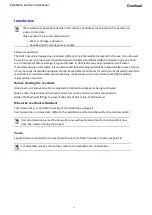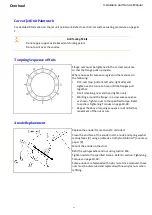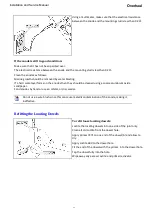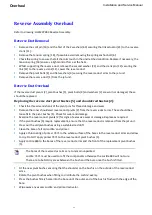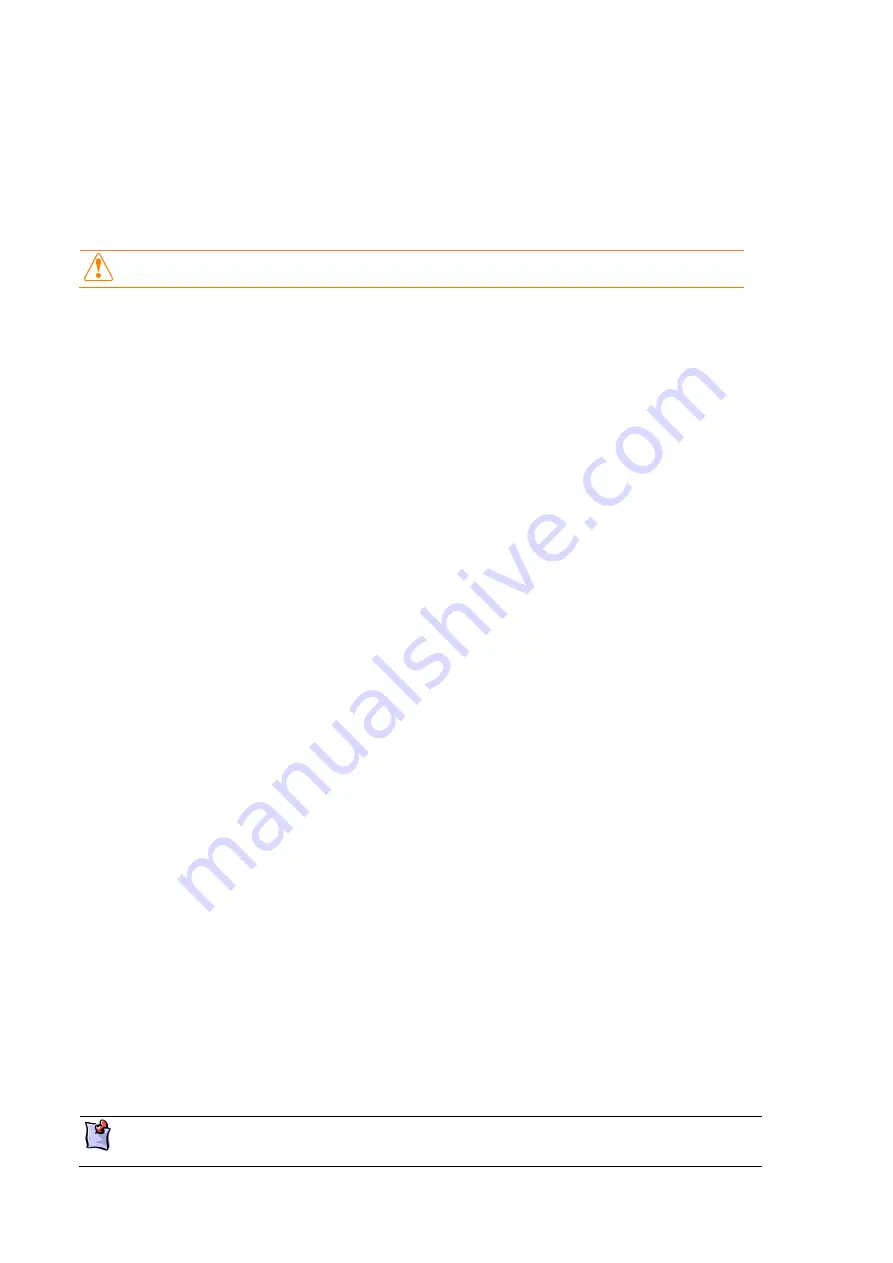
Installation and Service Manual
Maintenance
Thrust Bearing
Every 30 hours (or monthly whichever comes first).
Grease with a good quality lithium based ball bearing grease.
Normal operating temperature is 50 - 55 º C (120 - 130 º F) but the bearing can operate up to 120 ºC.
Most of the heat is generated by the seals. A faulty bearing will be indicated by noise and vibration
rather than temperature.
Do not over grease, use only 20ml of grease.
Water Seal:
Check for water leaks daily:
Visually check for water leaks from under the bearing housing
The water seal is not serviceable. If water is found, the water seal is faulty and must be replaced. Refer to
section: Bearing Housing and Water Seal Assembly Dismantling on page 9-18.
Anodes:
Check the following:
The earth bonding system.
Check for loose or corroded connections and test to ensure a low electrical resistance (less than
0.2Ohms.)
All sacrificial anodes.
Replace when 2/3 corroded. Refer to section: Anode Replacement on page 9-4.
For vessels that are continually afloat, check the condition of external anodes every 3 months.
Rapid anode consumption may indicate shore connection problems. For more information on shore
connections. Refer to section: Shore Connections on page 4-2.
The condition of the jet external anodes is indicative of the condition of the jet internal anodes (assuming
anodes were all replaced at the same time) so if the external anodes require replacement (replace when or
before they are 2/3 corroded) then the internal anodes should also be replaced.
For trailer boats (and other vessels that are afloat only periodically) the anode consumption will be low
because the anodes are immersed only periodically.
For vessels operating in low salinity water (such as rivers and lakes) the anode consumption will be low due
to the low electrical conductivity of the water.
Cleaning anodes
Anodes are typically all replaced at the vessels scheduled maintenance haul-out (typically annually). However
if the vessel is only afloat periodically (e.g. trailer boats) or operates in low salinity water then anode
consumption will be low. If it is expected that anodes will be less than 2/3 corroded at the following
maintenance haul-out, then the anodes may be cleaned rather than replaced.
Clean the anodes as follows:
Marine growth should be removed by water blasting.
If a hard scale layer forms on the anodes then they should be cleaned using a coarse aluminium oxide
sandpaper.
Sand anodes by hand or use an orbital, or disc sander.
Do not use a wire brush since this can cause metallic contamination of the anode, making it
ineffective.
8-11
Summary of Contents for HJ212
Page 1: ...HJ212 Installation and Service Manual R3A3 Jet unit Manual ...
Page 20: ...Product Description Installation and Service Manual 2 6 ...
Page 56: ...Commissioning Installation and Service Manual 6 4 ...
Page 62: ...Fault Finding Installation and Service Manual 7 6 ...
Page 82: ...Maintenance Installation and Service Manual 8 20 ...
Page 137: ...Installation and Service Manual Appendix Notes 10 21 ...
Page 141: ...Installation and Service Manual Appendix Notes 10 25 ...
Page 164: ...Appendix Installation and Service Manual 10 48 ...
Page 166: ......
Page 169: ......
Page 171: ......
Page 172: ......
Page 175: ......
Page 176: ......
Page 177: ......
Page 178: ......
Page 181: ......
Page 185: ......
Page 186: ......
Page 188: ......
Page 195: ......
Page 196: ......
Page 197: ...Notes ...



























